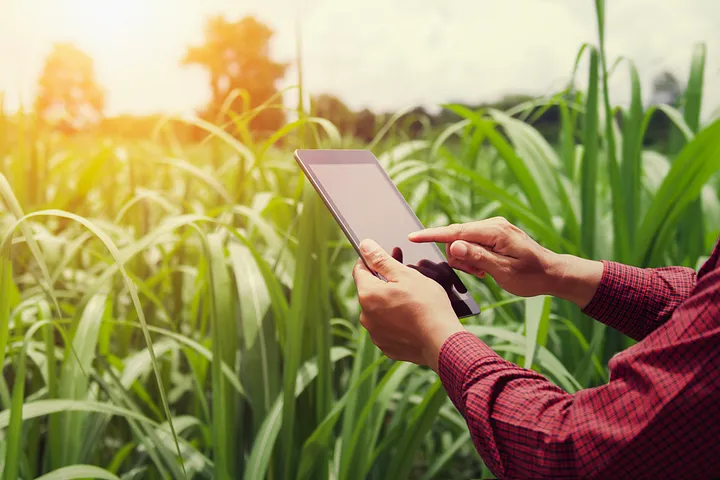The Growth of AgriTech Startups: Innovations Revolutionizing the Agricultural Industry

There’s a dynamic transformation taking place in the world of agriculture, a change sparked by the rapid emergence and growth of AgriTech startups. This burgeoning sector stands at the vanguard of innovation, utilizing advanced technology to remodel centuries-old agricultural methods, thereby establishing new paradigms of efficiency, sustainability, and output in farming. According to data presented in the AgFunder AgriFood Tech Investing Report, AgriTech investments skyrocketed in 2022, reaching a record-breaking $51.7 billion. This surge not only signifies the robust growth of the sector but also reflects the confidence investors have in the revolutionary potential of these startups. “The surging investment in AgriTech is a testament to the transformative power of technology in the realm of agriculture,” asserts Rob Leclerc, CEO of AgFunder. The substantial financial support pouring into this space highlights the immense possibilities and promising future that AgriTech holds in revolutionizing the landscape of agriculture.
The Evolution of Precision Agriculture: A Technological Leap Forward
Precision agriculture is a prime example of the transformative advancements being spearheaded by AgriTech startups. This innovative approach involves the integration of cutting-edge technologies such as remote sensing, GPS, and advanced data analytics to optimize every aspect of farming operations. Industry leaders in this domain, like Farmers Edge and PrecisionHawk, are empowering farmers with unprecedented access to detailed aerial imagery and real-time analytics, significantly enhancing decision-making processes. A report by Allied Market Research projects that the precision agriculture sector is poised to reach a valuation of $12.9 billion by 2027, growing at a compound annual growth rate (CAGR) of 13.7% from 2020 to 2027. Research published in the Journal of Applied Remote Sensing underscores the profound efficacy of precision agriculture tools, pointing to potential upticks in crop yields by 10–20% while also indicating possible reductions in water usage and chemical inputs by 30–50%. Additionally, the Food and Agriculture Organization of the United Nations (FAO) advocates for the role of precision agriculture in achieving global food security and sustainability goals, recognizing its capacity to increase the resilience of food systems, especially in the face of climate change. These statistics and endorsements vividly illustrate the monumental impact of AgriTech in addressing the critical challenges facing today’s agriculture industry.
Drones and Advanced Remote Sensing: Agriculture’s Technological Vanguard
Within the innovative world of precision agriculture, remote sensing technology has emerged as a fundamental component, with drones, satellites, and advanced imaging technologies revolutionizing how real-time crop data is gathered. One notable application is seen in Israel’s apple orchards, where drones are employed not merely as mechanical harvesters but as sophisticated analysts, evaluating factors such as ripeness, sugar levels, and overall fruit health. In a similar vein, drones in California’s vineyards are changing viticulture by monitoring water stress in grapevines, helping vintners manage irrigation more efficiently, according to a report by the American Society of Agronomy. Beyond harvesting, agricultural drones are undertaking roles like the timely pollination of apple blossoms — jobs historically accomplished by insects. This abundance of data is meticulously analyzed to gauge crop health, detect nutritional deficits, identify potential diseases, and predict yield potentials. A study published in the International Journal of Remote Sensing found that drone-collected data can improve nitrogen-level management in crops, showcasing the technology’s contribution to precision fertilization practices. By equipping farmers with this detailed, immediate data, remote sensing enables more targeted actions, such as the precise application of fertilizers and pesticides. This not only optimizes resource utilization but also mitigates environmental impacts. These advancements underscore the sweeping changes that AgriTech is bringing to traditional agricultural practices, enhancing both efficiency and ecological sustainability.
Water Management: AgriTech’s Answer to Enhanced Efficiency and Conservation
Confronting the global challenge of water scarcity, AgriTech startups are at the forefront, introducing ingenious solutions to one of agriculture’s most pressing issues. A standout endeavor among these innovations is the development of smart irrigation systems by up-and-coming AgriTech companies. These systems leverage sensor technologies to monitor soil moisture levels, enabling precise regulation of water usage across agricultural fields. By integrating Internet of Things (IoT) devices and expansive sensor networks, these trailblazing startups facilitate precise irrigation management, significantly reducing water waste and calibrating water usage to align perfectly with plant demands. In a report by the Water Footprint Network, smart irrigation practices, such as those enabled by sensor technologies, can reduce agricultural water consumption by 20% globally, a critical advancement considering agriculture accounts for approximately 70% of the world’s freshwater withdrawals. Advanced monitoring configurations allow farmers to continuously observe soil moisture levels, weather conditions, and even predict evapotranspiration rates, leading to more informed irrigation strategies. Furthermore, the United Nations Department of Economic and Social Affairs (UNDESA) underscores the importance of efficient water management in agriculture for achieving the Sustainable Development Goals (SDGs), particularly in regions facing acute water scarcity. By promoting these advanced irrigation practices, AgriTech startups are not only helping farmers conserve a vital resource but also ensuring that crops receive optimal nourishment for healthy growth.
Vertical Farming’s Rise: Maximizing Space, Minimizing Environmental Impact
AgriTech is central to the emergence of vertical farming, a space-efficient, environmentally friendly agricultural approach. This technique involves cultivating crops in vertically stacked layers or controlled indoor settings, like hydroponic systems. AgriTech startups leverage innovations such as LED lighting and climate control to ensure optimal growth conditions, independent of outdoor climates. A Journal of Cleaner Production study reveals that vertical farming can yield up to ten times more per square meter than traditional methods. It lessens the need for vast farmland, curbs reliance on chemicals, and reduces transport costs and emissions, enhancing produce accessibility and sustainability. The Agronomy Society of America emphasizes its ability for year-round production, ensuring a stable fresh produce supply. Especially useful in crowded cities with high fresh produce demand, vertical farming addresses urban food challenges, as endorsed by the FAO, by shortening the farm-to-fork journey, offering cleaner produce, and providing a sustainable solution to urban food supply issues.
AI and Machine Learning: Revolutionizing Agriculture
The integration of artificial intelligence (AI) and machine learning (ML) in AgriTech represents a groundbreaking evolution. These technologies excel in parsing vast datasets to provide actionable insights and predictive analytics. For instance, ML algorithms analyze historical weather patterns, crop yields, and market data to offer farmers optimized planting schedules and accurate yield projections. According to research from McKinsey & Company, AI applications in agriculture can increase crop yields by up to 6% while reducing resource consumption. AI’s prowess extends to early pest and disease detection, identifying subtle changes often overlooked by the human eye. The International Journal of Pest Management highlights how AI can improve pest management strategies, potentially reducing crop losses by up to 25%. These advancements equip farmers with the tools to make informed decisions, optimize resource allocation, and mitigate risks, significantly enhancing productivity. Moreover, the World Government Summit reports that AI in agriculture could contribute to global economic gains of $5.2 trillion by 2030. This technological stride is pivotal in steering modern agriculture towards increased efficiency and sustainability.
Global Impact of AgriTech: Empowering Farmers Worldwide
The footprint of AgriTech startups extends beyond developed countries, making significant strides in nations like India, Kenya, Brazil, and Vietnam. These companies are utilizing mobile technology to reach smallholder farmers in remote areas, offering vital information on agriculture practices, market prices, and weather forecasts. As per the GSMA, mobile agricultural services have gained over 1.7 million active users in Sub-Saharan Africa, indicating the technology’s extensive impact. Mobile apps and digital platforms are also establishing direct links between producers and consumers, bypassing middlemen and ensuring farmers receive fair payment for their products. The World Bank highlights this direct market access as a key factor in increasing smallholder farmers’ incomes. By bridging the informational divide and improving market access, AgriTech startups are bolstering small-scale agriculture and stimulating economic growth in rural communities globally.
Revolutionizing Agriculture: The AgriTech Breakthroughs
AgriTech startups are at the forefront of transforming agriculture with innovations that increase productivity and sustainability while conserving resources. Through technologies like precision agriculture and remote sensing, they’re improving crop yields and reducing water and chemical inputs. They’re leading the fight against water scarcity with smart irrigation and promoting space-saving vertical farming. The adoption of AI and ML is enabling data-driven decisions and foresight, helping farmers optimize practices and minimize risks. Additionally, these startups are connecting with remote small-scale farmers, providing valuable insights and market access. The Financial Times highlights that such technological integration could potentially boost global agricultural efficiency by 20% by 2030. The growing investment in AgriTech emphasizes its revolutionary potential in guiding agriculture towards a more sustainable and efficient future.
Conclusion
In essence, AgriTech startups are spearheading an agricultural revolution, blending classic practices with modern technology to enhance productivity and sustainability. They’re pioneering everything from precision farming to creative water-saving strategies, playing a critical role not just in redefining agriculture, but also in fortifying food security and protecting the environment. With ongoing investment flowing into AgriTech, the sector stands as a symbol of ingenuity and advancement, signaling a brighter, more sustainable future for agriculture worldwide.





